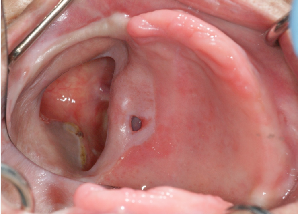Oral Cancers Part 1
There are many types of oral cancers that occur inside the mouth: those originating from salivary glands, lymphoid tissues, the tonsils, the pigment-producing cells, and those originating from the tissues that line the mouth (squamous cell carcinoma). According to the National Cancer Institute, the percent of patients surviving 5 years is 64.8% (https://seer.cancer.gov/statfacts/html/oralcav.html). The key to successful treatment of oral cancers is early detection and avoiding risks factors such as, alcohol usage, especially in synergy with tobacco, and betel nuts. Betel nuts are more commonly chewed in Asian countries, similar to the use of chewing tobacco in the States.
The treatment for oral cancers depends on the type, location, stage, and size of the cancer. In most cases, surgery is required in conjunction with head and neck radiation therapy. It is important to see a prosthodontist prior to treatment to make sure your teeth are in good health before surgery and radiation therapy. Changes to your mouth may make it difficult, if not impossible to treat them afterwards. For example, loss of oxygen-rich blood to the jaw bone occurs after head and neck radiation therapy as the vessels get smaller and healing becomes more difficult, if not, impossible. That is why non-restorable teeth or those that have a poor long-term prognosis need to be extracted. Healing of the gum tissues needs to take place prior to radiation therapy as well.
Dental models of your teeth may need to be taken prior to surgery and radiation therapy. This is because the ligaments and muscles in your jaw joint may be affected, leading to limited mouth opening making impressions later very difficult. The dental models are used to help in the reconstruction of your oral cavity and to construct fluoride trays to protect and strengthen your teeth from decay. This is because you will be much more susceptible to decay, after radiation therapy, due to a much lower saliva flow.

This patient wears a prosthesis which prevents food from going into the nasal cavity (defect or hole, created by surgery to remove their tumor) and re-establishes correct speech. It can be removed for easy cleaning after a meal and at bedtime.
Feel free to call Dr. Huang, a dual-board certified prosthodontist, for a second opinion on pre and post-treatment changes to your mouth prior to your oral cancer treatment.
Nova Premier Dental
313 Park Ave #306 Falls Church, VA 22046
(703) 532-7586

